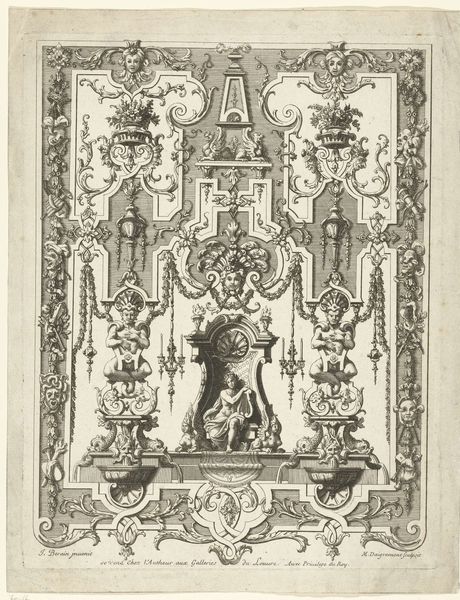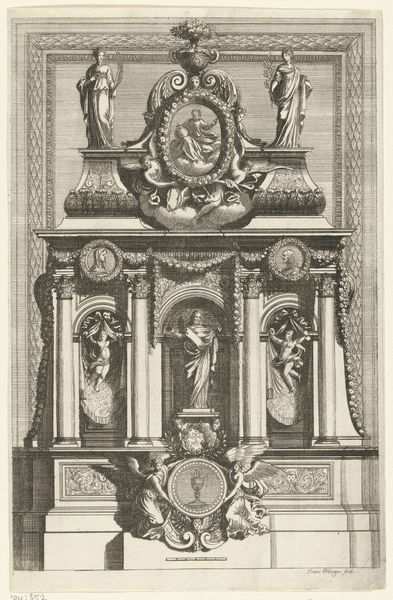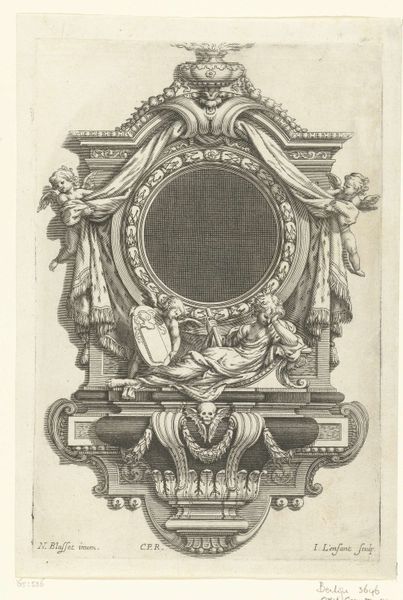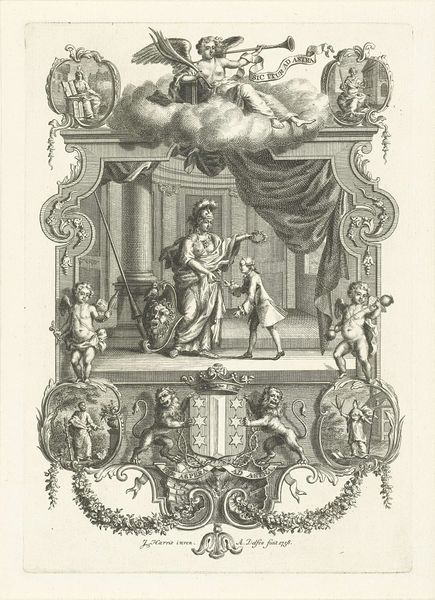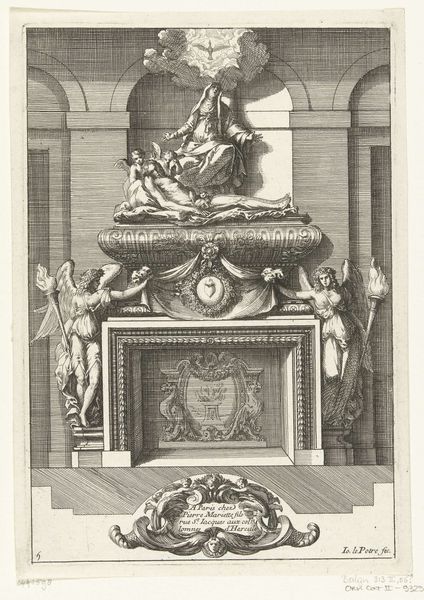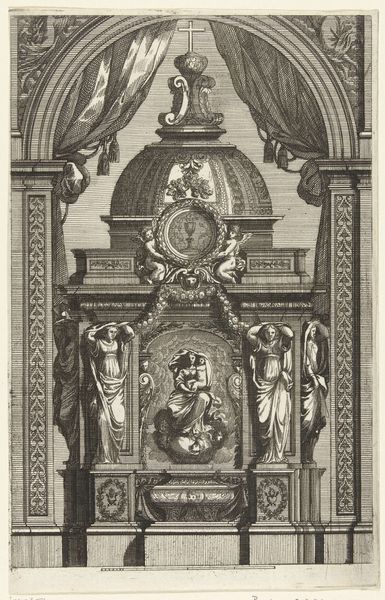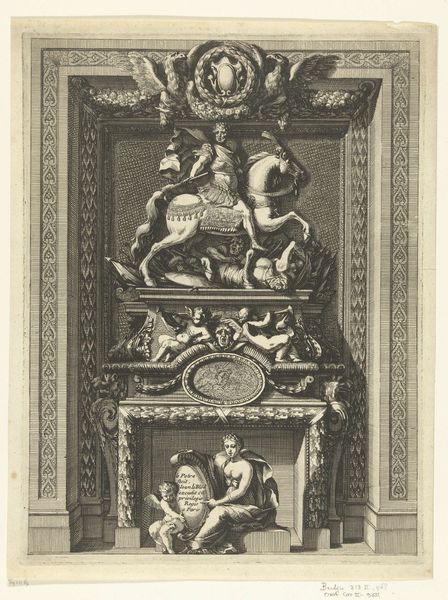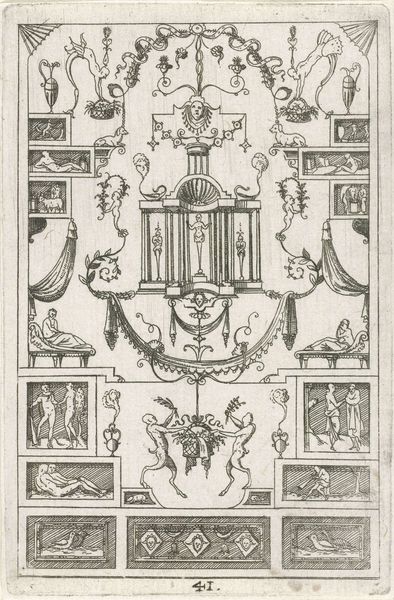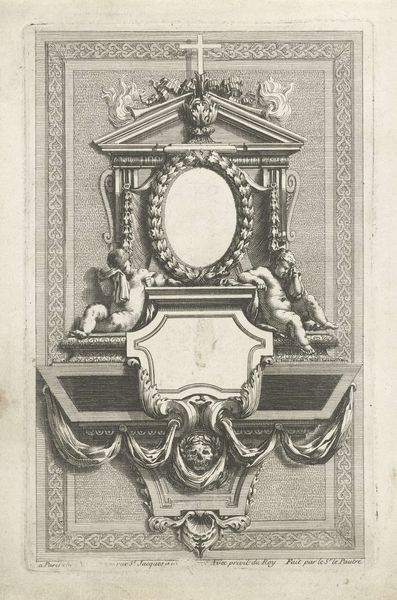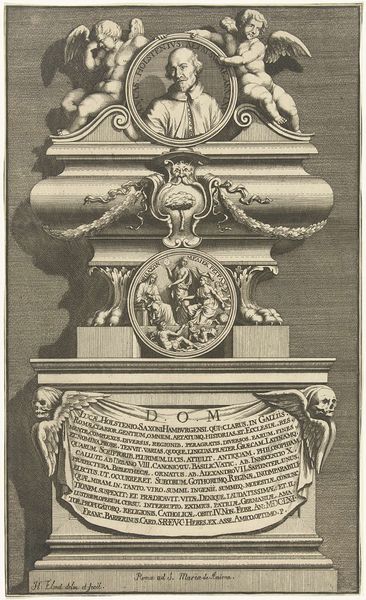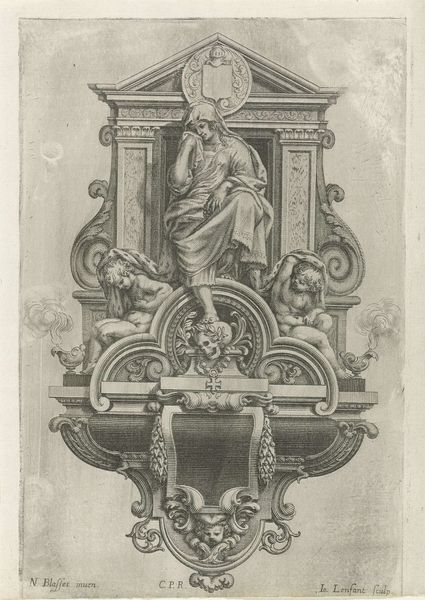
print, engraving
#
portrait
#
baroque
# print
#
old engraving style
#
academic-art
#
engraving
Dimensions: height 224 mm, width 151 mm
Copyright: Rijks Museum: Open Domain
Curator: At first glance, this engraving strikes me as intensely decorative, almost overwhelming with its ornate details. The balance seems a bit precarious. Editor: Indeed. Let me introduce this print, attributed to Jean Lepautre and dating back to circa 1691-1703. It's titled "Doodskist" which means coffin in Dutch. It's currently held here at the Rijksmuseum. Curator: "Coffin"—that certainly contextualizes my initial feeling of foreboding despite the presence of putti. The symmetrical arrangement, while typical of the Baroque, feels strained in service to this somber subject. Editor: Note how Lepautre has framed a solemn, robed figure beneath a draped canopy topped with a cross. Flanking this central figure, at roughly mid-height in the composition, are the two cherubs, amidst abundant floral ornamentation. Curator: Yes, the contrast between the idealized putti and the gravity of death is fascinating. It reflects a society grappling with mortality, perhaps seeking to soften the blow through elaborate ritual and allegorical figures. The very fine line work really communicates light here, and you have the texture of fabric, the sheen of cherubic skin, and the density of foliage, all beautifully rendered. Editor: It is important to note that engravings of this era served many purposes, including documenting and disseminating ideas about design and ornamentation. How do you read that into Lepautre's work here? Curator: That’s a key point. Look at the complex framing elements, the cartouche below, the swirling motifs. This wasn't merely about depicting grief; it was showcasing a design, offering a template for commemorating death in a grand, Baroque fashion, fit for wealthy patrons and their mourning desires. It becomes a performance. Editor: Precisely, so the engraving circulates, influencing design and practice of commemorative markers beyond those that could afford fine statuary or oil paintings, which also gives it democratic effect. This all contributes to how we remember individuals and mortality more broadly. I do appreciate this close looking, but also how it impacts societal notions about how one handles bereavement, memory, and the afterlife. Curator: The composition, with its juxtaposition of somber representation and almost riotous ornamentation, becomes an interesting tension, offering an active perspective of remembrance. Editor: It highlights death and remembrance—a balance we still struggle with today in contemporary society.
Comments
No comments
Be the first to comment and join the conversation on the ultimate creative platform.
